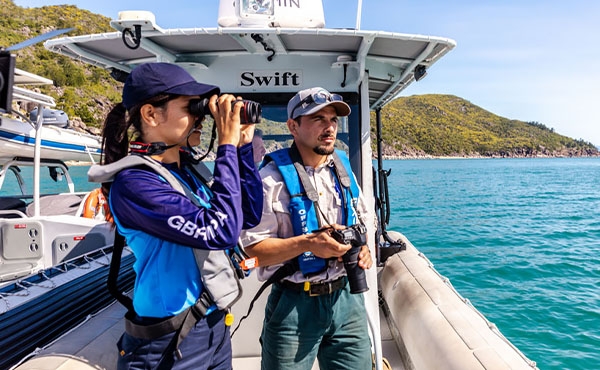Shipping relates to the movement of commercial vessels within the Region. It includes travel to, from, and between the Region’s ports and transiting shipping channels, but not activities associated with ship movements within port areas (Section 7.3.4). A ship is a vessel greater than 50 metres in length. Commercial ships sailing within the Region include bulk carriers, container carriers, vehicle carriers, general cargo ships, tankers, cruise ships and larger superyachts.
Shipping is well regulated and effectively managed
Shipping is well regulated and effectively managed, reflecting the maturity of the planning system. A major focus of shipping controls is on the reduction of the potential for incidents and the rapid response on those that do occur to reduce their impact. Shipping generally is well regulated in the Region, with a governing framework established under the North-East Shipping Management Plan 1979 and pollution response framework under the Queensland Coastal Contingency Action Plan.1977 The use of Marine Orders provides day-to-day measures to support management and allow for rapid adoption of arrangements from international levels, such as the International Maritime Organization’s Convention for Safety of Life at Sea, or to respond to particular emerging areas.
Vessels use several major shipping routes through the Region. The entire Region is part of the Great Barrier Reef and Torres Strait Vessel Traffic Service (Reef VTS) and subject to a range of pilotage requirements. Under the North-East Shipping Management Plan, there is a strong working relationship between the Australian Maritime Safety Authority, Maritime Safety Queensland and the Reef Authority, with support from port authorities.1979 The plan provides an effective framework that is periodically reviewed to reprioritise management actions for continuous improvement in the sector. A key change since 2019 is the use of exhaust gas cleaning systems to reduce sulphur fuel emissions as part of a transition towards lower emissions in international shipping. These scrubbers require discharge of sulphur compounds into the marine environment. Although assessments have been undertaken on the risks of these discharges, they were not specific to the context of the Reef (Section 5.8.3) and the sensitivities of and impacts on Reef habitats remain unknown.
Various shipping incidents occurred during the reporting period. However, these primarily related to factors outside of the control of managing agencies, for instance, loss of propulsion or crewing conditions, and responses have been effective in mitigating risk. Where incidents result in marine pollution, resourcing and coordination of the response is well established within the Australian Maritime Safety Authority and Maritime Safety Queensland. This includes arrangements under the Queensland Coastal Contingency Action Plan.1977
Challenges remain for management of shipping in relation to recognised gaps in the understanding of, and response to, vessel strike and underwater noise risks in shipping areas. The ongoing implementation of actions associated with the National Strategy for Reducing Vessel Strike on Cetaceans and other Marine Megafauna 1980 has not yet been integrated into planning and management arrangements. Similarly, policy development for underwater noise is underway but not yet implemented.
Since the introduction of Reef VTS, there has been a significant reduction in ship groundings and vessel incidents and low levels of environmental impacts across shipping channels. Outcomes for shipping remain effective, but challenges remain in ensuring secure funding for effective habitat remediation efforts following an incident.


